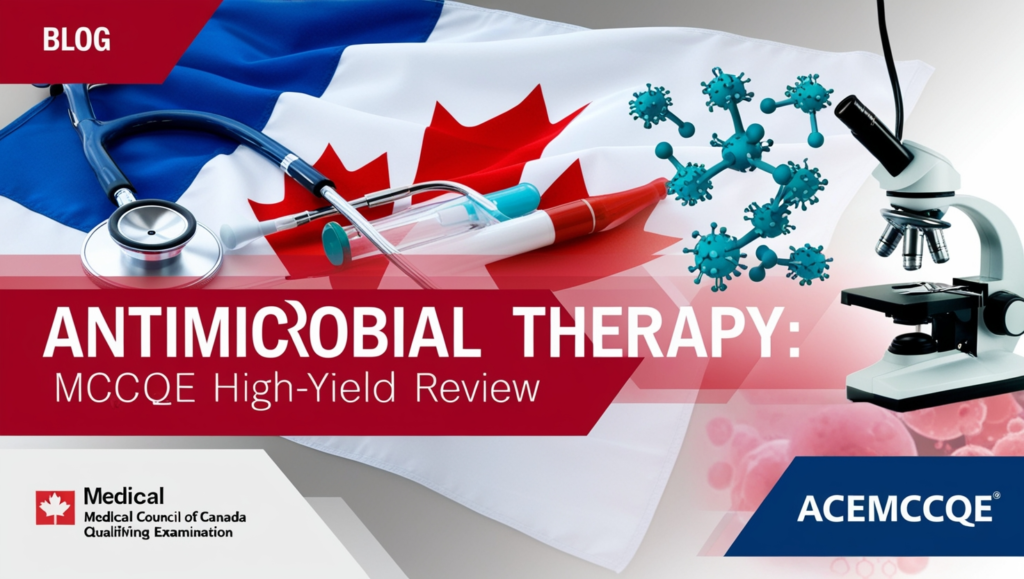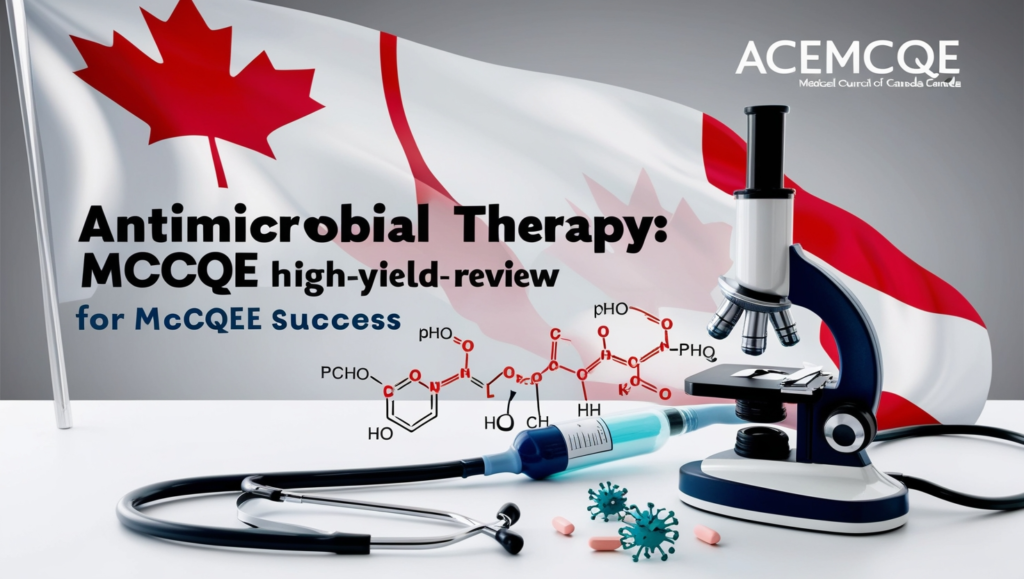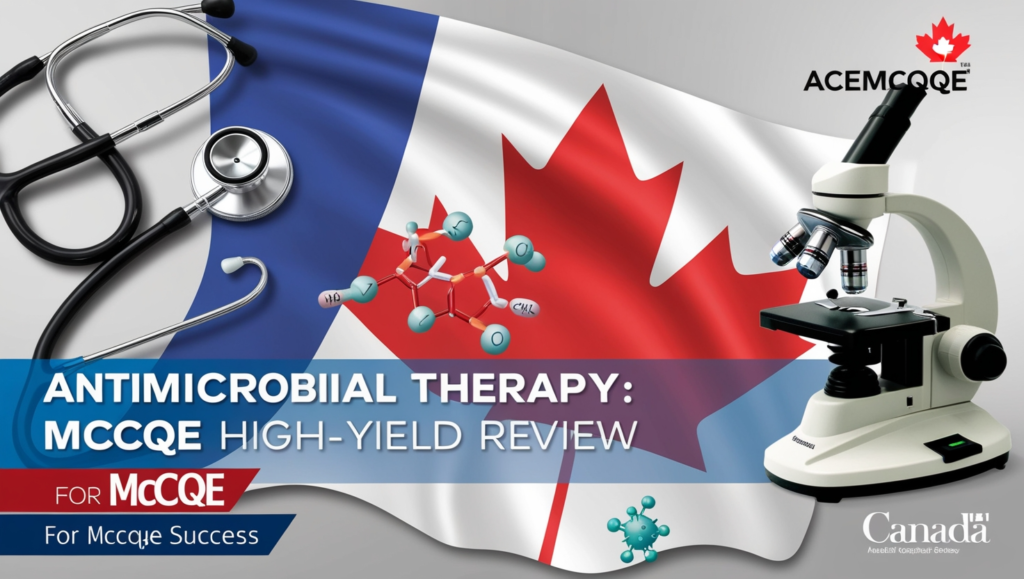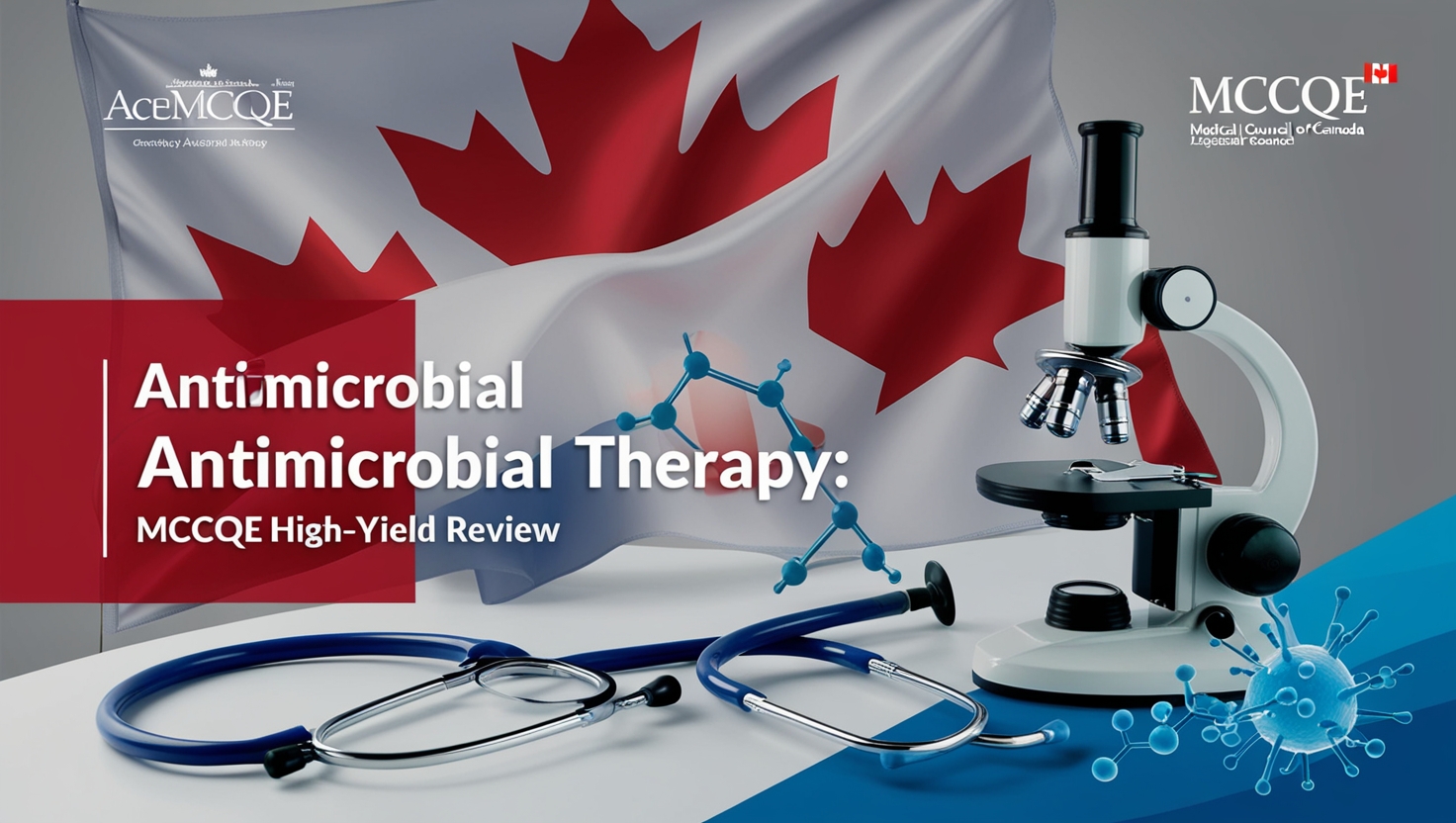Antimicrobial therapy is a cornerstone of modern medicine, playing a crucial role in managing bacterial, viral, fungal, and parasitic infections. As a high-yield topic for the Medical Council of Canada Qualifying Examination (MCCQE) Part 1, a deep understanding of antimicrobial agents, their mechanisms, resistance patterns, and clinical applications is essential. This blog will provide an in-depth review of antimicrobial therapy, focusing on key concepts relevant to MCCQE candidates.
Basic Principles of Antimicrobial Therapy

Antimicrobials are classified based on their target pathogens and mechanisms of action. The primary classes include:
- Antibacterial Agents: Target bacterial infections.
- Antiviral Agents: Act against viral infections.
- Antifungal Agents: Treat fungal infections.
- Antiparasitic Agents: Combat protozoal and helminthic infections.
Mechanisms of Action of Antibacterial Agents

Understanding the mechanism of action of antibiotics is fundamental for the MCCQE. Antibiotics are classified based on their target site in bacterial cells:
1. Cell Wall Synthesis Inhibitors
- Beta-lactams (Penicillins, Cephalosporins, Carbapenems, Monobactams)
- Glycopeptides (Vancomycin, Teicoplanin) These antibiotics inhibit peptidoglycan synthesis, leading to bacterial cell lysis.
2. Protein Synthesis Inhibitors
- 30S Ribosomal Subunit Inhibitors: Aminoglycosides (Gentamicin, Amikacin), Tetracyclines (Doxycycline, Minocycline)
- 50S Ribosomal Subunit Inhibitors: Macrolides (Azithromycin, Erythromycin), Lincosamides (Clindamycin), Chloramphenicol These agents interfere with bacterial protein synthesis, preventing growth and proliferation.
3. DNA/RNA Synthesis Inhibitors
- Fluoroquinolones (Ciprofloxacin, Levofloxacin): Inhibit DNA gyrase and topoisomerase IV.
- Rifamycins (Rifampin): Inhibit RNA polymerase, particularly effective against Mycobacterium tuberculosis.
4. Metabolic Pathway Inhibitors
- Sulfonamides and Trimethoprim: Block folate synthesis, essential for bacterial DNA replication.
5. Cell Membrane Disruptors
- Polymyxins (Colistin, Polymyxin B): Disrupt bacterial membranes, mainly used for multidrug-resistant Gram-negative infections.
Antiviral Agents

Viruses replicate within host cells, making them difficult to target selectively. Antiviral drugs include:
- Nucleoside/Nucleotide Analogues: Acyclovir (HSV, VZV), Ganciclovir (CMV), Zidovudine (HIV)
- Reverse Transcriptase Inhibitors: Used in HIV therapy.
- Protease Inhibitors: Key in HIV and HCV management.
- Neuraminidase Inhibitors: Oseltamivir (Influenza A and B).
Antifungal Agents
Fungal infections range from superficial to systemic. Key antifungals include:
- Polyenes (Amphotericin B, Nystatin): Bind ergosterol, disrupting fungal membranes.
- Azoles (Fluconazole, Itraconazole, Voriconazole): Inhibit ergosterol synthesis.
- Echinocandins (Caspofungin, Micafungin): Inhibit beta-glucan synthesis, essential for fungal cell walls.
Antiparasitic Agents
Parasites cause diverse diseases, necessitating targeted therapy:
- Antiprotozoals: Metronidazole (Giardiasis, Trichomoniasis), Chloroquine (Malaria)
- Antihelminthics: Albendazole, Ivermectin (Helminth infections)
Antimicrobial Resistance
A major challenge in modern medicine is the rise of antimicrobial resistance (AMR). Mechanisms include:
- Enzymatic degradation (e.g., beta-lactamases breaking down penicillins)
- Efflux pumps expelling antibiotics from bacterial cells
- Target modification reducing drug binding affinity
- Biofilm formation protecting bacteria from antibiotics
Clinical Applications in MCCQE
Candidates should focus on key scenarios:
- Empiric vs. Targeted Therapy: Initial broad-spectrum therapy vs. culture-guided therapy.
- Combination Therapy: Synergy in tuberculosis and HIV treatment.
- Adverse Effects: Aminoglycoside nephrotoxicity, fluoroquinolone tendon rupture.
- Drug Interactions: Macrolides inhibiting CYP450 enzymes.
Conclusion
A solid grasp of antimicrobial therapy is essential for the MCCQE Part 1. Understanding mechanisms, resistance patterns, and clinical applications will not only aid in exam preparation but also improve real-world clinical decision-making. By mastering these high-yield concepts, candidates will be better equipped to manage infectious diseases effectively. Read more blog…



13 thoughts on “Antimicrobial Therapy: MCCQE High-Yield Review”
Comments are closed.